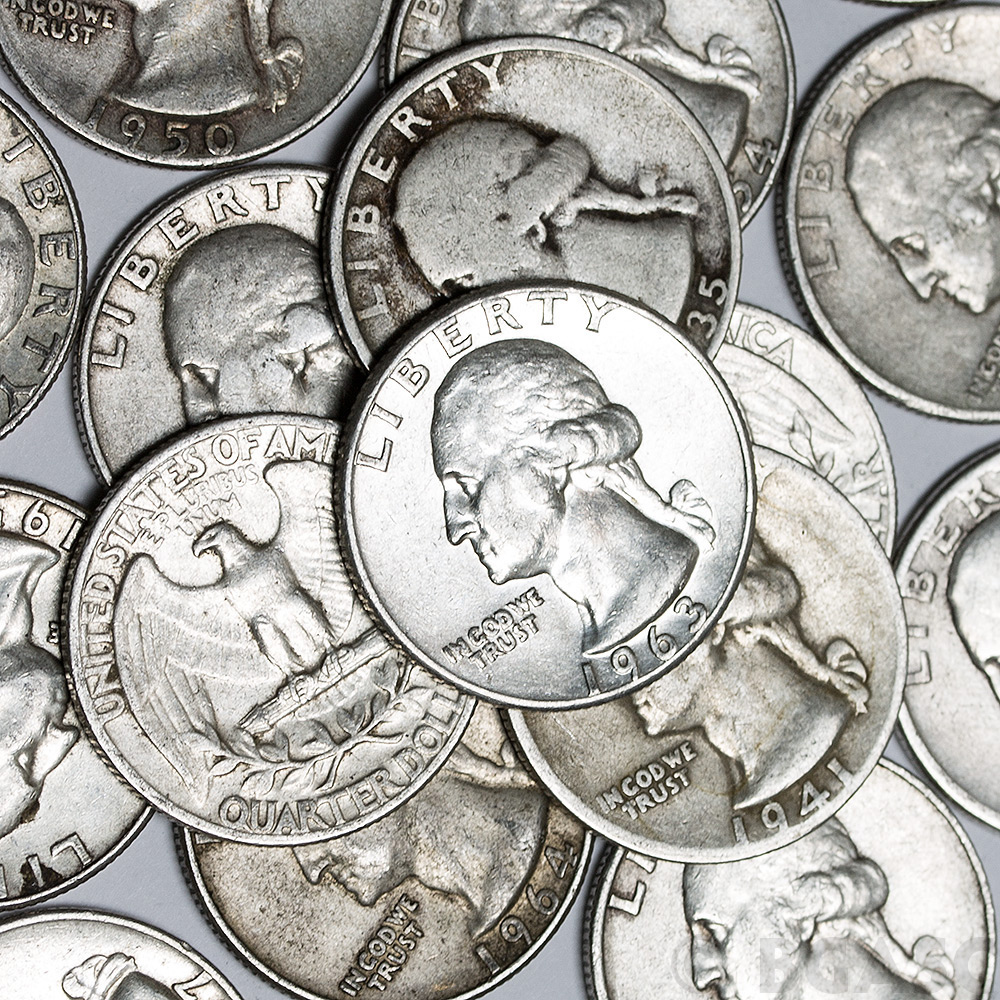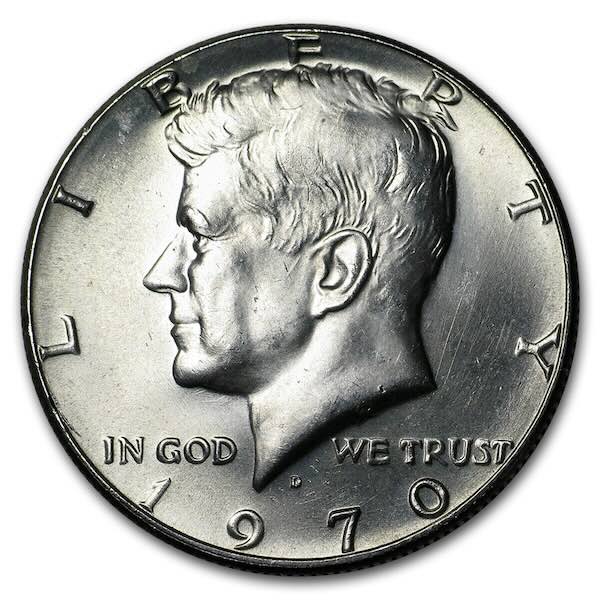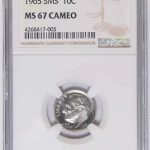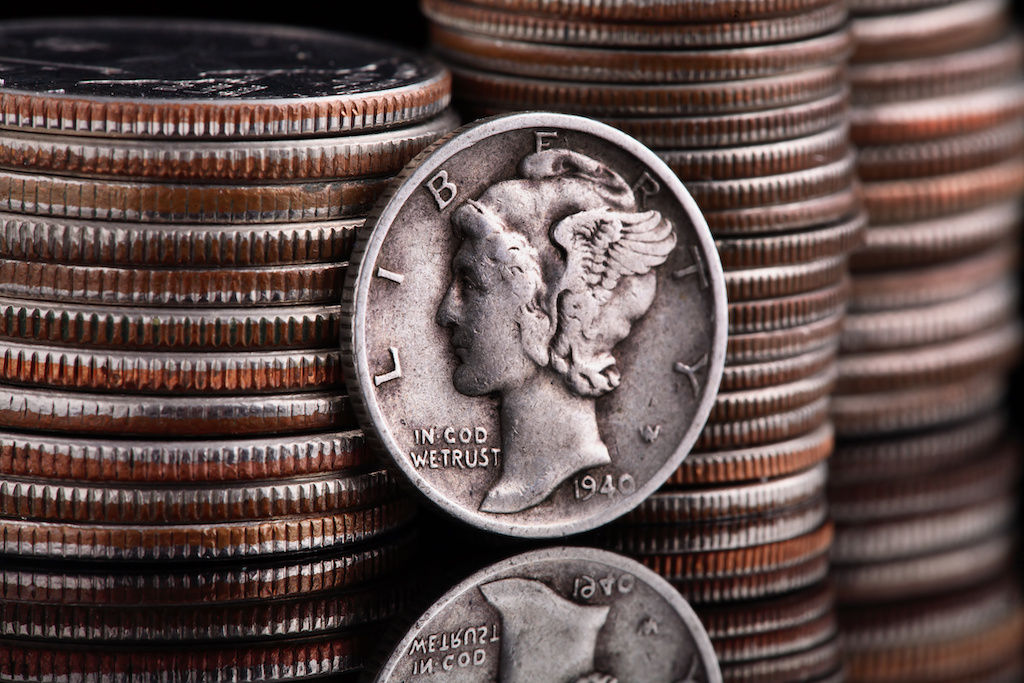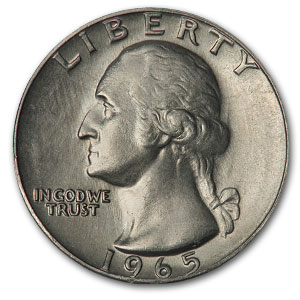The American quarter dollar coin, commonly called the “quarter,” has been a cornerstone of U.S. currency since its initial release in 1796. While its face value has remained the same, some quarters are worth significantly more to collectors.
From the quarter’s inception in 1796 until 1964, these coins were minted with a composition of 90% silver and 10% copper. Even quarters from this era that are heavily worn carry the worth of silver’s melt value.
In 1965, the U.S. Mint abandoned using silver for circulating coins due to rising silver prices and began issuing modern clad quarters that are still circulating today.
Early American Quarters
The designs of the quarter have evolved over the years. Starting with the Draped Bust Quarter 1796, followed by the Capped Bust and Seated Liberty Designs were the mainstays of the 19th century.
1796 – Draped Bust Quarter: The first quarter was minted in 1796, featuring the Draped Bust design by Robert Scot. This design depicted Liberty with flowing hair and a draped bust on the obverse and an eagle surrounded by a wreath on the reverse.
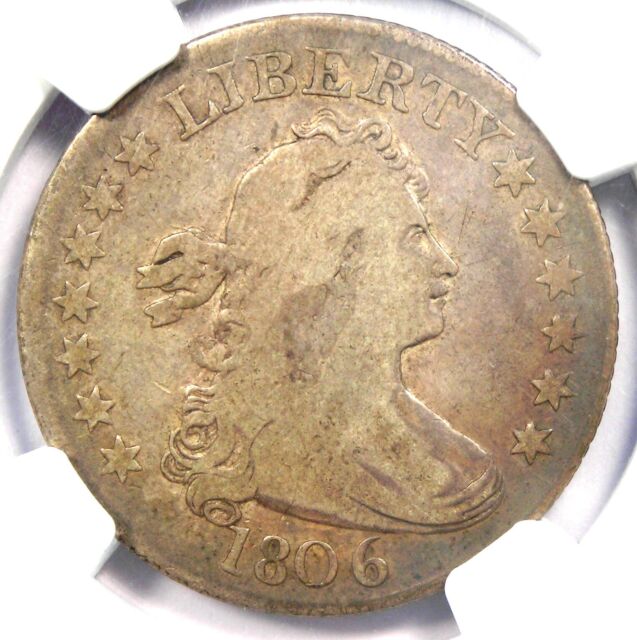
1804-1838 – Capped Bust Quarter: Following the Draped Bust design, the Capped Bust quarter was introduced. Designed by John Reich, this coin featured Liberty wearing a cap on the obverse and a simplified eagle on the reverse.
1838-1891 – Seated Liberty Quarter: The Seated Liberty design by Christian Gobrecht was used from 1838 to 1891. This design showed Liberty seated on a rock, holding a shield and a pole with a cap on the obverse, and an eagle with a shield on the reverse.
These early American quarters were minted in much lower quantities than today, making them highly sought after by collectors. Even worn and circulated Draped Bust quarters from the early 1800s can be worth $600 to $4,000 depending on the condition and year.
20th Century Quarters Worth Money
1892-1916 – Barber Quarter: The Barber quarter, designed by Charles E. Barber, was in circulation from 1892 to 1916. This design featured Liberty with a laurel wreath on the obverse and a heraldic eagle on the reverse.
Even though Barber quarters are sometimes mixed with junk silver, these coins are prized by collectors. The value of common date Barber quarters can range from $10 to $15 in good condition up to around $100 in extra fine condition. Higher grades and uncirculated Barber quarters can command thousands at auction. Recently, a 1913-S Barber Quarter in Good (G4) condition realized over $2,500 at a Heritage Auctions event.
1916-1930 – Standing Liberty Quarter: Introduced in 1916, the Standing Liberty quarter was designed by Hermon A. MacNeil. It depicted Liberty standing with a shield and an olive branch on the obverse and an eagle in flight on the reverse.

The value of an early Standing Liberty quarter in circulated but good condition with a fully visible date can vary significantly based on the specific year and mint mark. The Type 1 design which showed bare breasts on the obverse, was initially shunned by the public. These coins were issued only in 1916 and early 1917 before being replaced with the Type 2 design. Type 1 Standing Liberty quarters in good condition are much rarer and in good condition are worth up to $300, while uncirculated coins typically sell for thousands at auction.
1932-Present – Washington Quarter: The Washington quarter was first issued in 1932 to commemorate the 200th birthday of George Washington. Designed by John Flanagan, this coin features a profile of Washington on the obverse and an eagle with outstretched wings on the reverse. All Washington quarters minted before 1965 are made from 90% silver and is valued based on the intrinsic value of the metal.
The current circulating coin is a derivative of Flanagan’s original design, maintaining the iconic image of Washington.
State Quarters Program and America The Beautiful Quarters
The U.S. Mint has used the quarter as a canvas for commemorative coin programs, most notably the State Quarters Program (1999-2008), which featured unique designs for each of the 50 states.
In recent years, the Mint has continued to use quarters for other commemorative series, including the America the Beautiful series, which highlights national parks and other significant U.S. landmarks.
These programs produced billions of quarters, but within these mintages, some notable errors and rarities can be found that are worth significantly more than their face value. These coins are sought after by collectors. Below are some of both programs’ most notable and valuable error coins.
1999-P Delaware “Spitting Horse” Quarter Error
- Error Type: Die Crack
- Value: $20 to over $100
This error appears as a die crack extending from the horse’s mouth on the reverse, making it look like the horse is “spitting.” Depending on the severity of the die crack, these errors can range from $20 to over $100, with some high-grade examples fetching even more.
2004 Wisconsin Extra Leaf High and Low Errors
- Error Type: Die Gouge
- Value: $100 to $1,500+
On the reverse of some 2004 Wisconsin quarters is an extra leaf on the corn stalk. There are two varieties: the “High Leaf” and the “Low Leaf.”
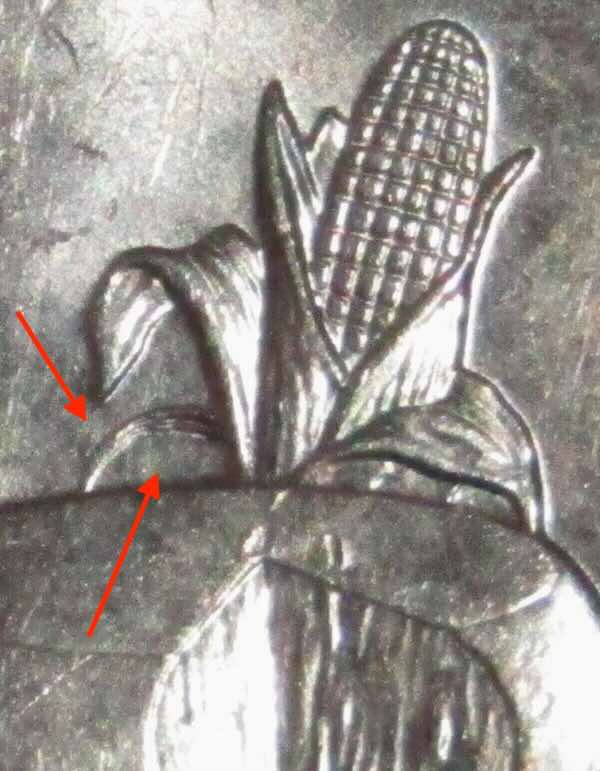
These varieties occurred due to a die gouge. The “Extra Leaf” varieties are highly sought after and these quarters can be worth $100 to $1,500 or more, depending on condition and grade.
1999 Georgia State Quarter Errors
Off Center Strike
- Value: $50 to $250
An off-center strike error occurs during the minting process when a coin blank (planchet) is improperly aligned with the coin dies and can vary in severity.
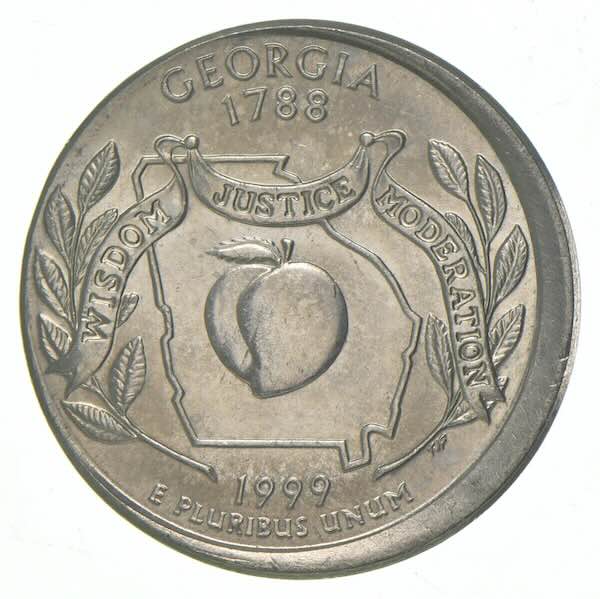
An off-center error coin value can depend on factors such as the degree of misalignment and condition. A 1999 Georgia State Quarter with an off-center strike error can be worth $50 to $250 depending on the severity of the misalignment.
While the U.S. Mint produced over 939 million 1999 Georgia Quarters, a small fraction can be found with off-center errors.
Missing Clad Layer
- Error Type: Missing Clad Layer
- Value: $200 to $1,000
Some Georgia state quarters were struck without the outer copper-nickel clad layer, revealing the copper core beneath.
This type of error significantly affects the coin’s appearance, with the quarter having a copper color.
Missing clad layer errors can be worth between $200 and $1,000 depending on the severity and condition of the coin.
2020-W American Samoa Bat Quarter
- Error Type: Doubled Die
- Value: $50 to $200
The 2020 American Samoa Quarter, commonly known as the “Bat Quarter,” features a design honoring the National Park of American Samoa with an image of a Samoan fruit bat mother and her pup.
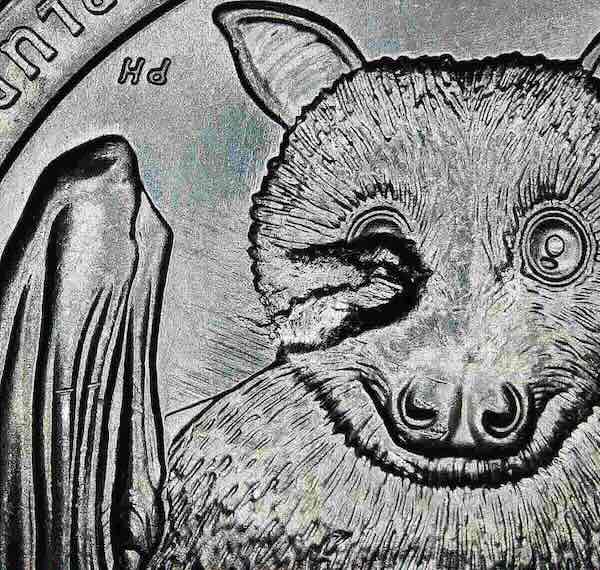
A notable mint error associated with this coin is the “strike-through grease” error, often called the “Blind Bat” error.
These quarters can range from $50 to $200, depending on the grade and extent of the error and the coin’s overall condition.
More Quarters Worth Money
1. 1916 Standing Liberty Quarter
- Mint Mark: No mint mark; minted in Philadelphia.
- Value: In mint state (MS) condition, it can fetch prices upwards of $25,000 to $100,000 or more, depending on the grade.
The 1916 Standing Liberty Quarter is the first year of issue for the Standing Liberty series and had a very low mintage of only 52,000 coins.
Designed by Hermon A. MacNeil, the 1916 quarter features Lady Liberty standing in a flowing gown with a shield and an olive branch.
Due to its rarity and historical significance, even lower-grade examples can fetch high prices, and mint-state specimens are extremely valuable, often selling for thousands of dollars at auction.
2. 1918/7-S Standing Liberty Quarter
- Mint Mark: “S” mint mark for San Francisco.
- Value: In high grades, this coin can be worth $15,000 to over $80,000.
The 1918/7-S Standing Liberty Quarter is a notable and rare error coin, featuring a prominent overdate where a “7” is struck over the original “8” in the coin’s date.
This variety was minted at the San Francisco Mint and is highly coveted by collectors due to its scarcity. In higher grades, especially uncirculated, this coin can fetch prices well into the tens of thousands of dollars.
It’s one of the most famous overdate errors in U.S. numismatics and a key date in the Standing Liberty Quarter series.
3. 1927-S Standing Liberty Quarter
- Mint Mark: “S” mint mark for San Francisco.
- Value: In high grades, this coin can range from $2,500 to over $30,000.
With a mintage of just over 396,000, the 1927-S Standing Liberty Quarter stands out as one of the key dates in the series.
In circulated conditions, it can be moderately valuable, but in uncirculated or high-grade conditions, its value can rise significantly, often reaching into the thousands of dollars due to its rarity and demand among collectors.
This coin is a must have for collectors aiming to complete a full set of Standing Liberty Quarters.
4. 1932-D Washington Quarter
- Details: The first year of issue for the Washington quarter, designed by John Flanagan. The Denver mint had a relatively low mintage of 436,800 coins.
- Mint Mark: “D” mint mark for Denver.
- Value: High-grade examples can be worth between $5,000 and $30,000.
5. 1932-S Washington Quarter
- Details: Another key date in the Washington quarter series with a low mintage of 408,000 coins.
- Mint Mark: “S” mint mark for San Francisco.
- Value: High-grade coins can range from $5,000 to $25,000.
6. 1950-D/S Washington Quarter
- Details: This is a popular over mint mark variety where a “D” was stamped over an “S.”
- Mint Mark: “D” over “S” for Denver.
- Value: In mint state condition, it can be worth several hundred to a few thousand dollars.
7. 1964-D Washington Quarter
- Details: This coin is notable for the doubled die obverse variety, where the date and lettering are doubled.
- Mint Mark: “D” mint mark for Denver.
- Value: High-grade examples can fetch prices in the range of several hundred to a few thousand dollars, depending on the degree of doubling.
Factors Affecting Value
- Condition (Grade): Coins in mint state (MS) condition with no wear are generally more valuable. Coins are graded on a scale from 1 to 70, with higher numbers indicating better condition.
- Rarity: Low mintage numbers or coins with unique features, such as errors or varieties, tend to be more valuable.
- Historical Significance: Coins from significant years or first-year issues can be more sought after.
- Demand: Popularity among collectors can drive up the value of certain coins.
Conclusion
These are some of the quarters minted since 1900 worth more than face value due to their intrinsic value, rarity, condition, and historical significance. Collectors and investors prize them for their unique characteristics and the stories they represent in the history of American coinage. If you own any of these coins, it is advisable to have them graded by a professional grading service to determine their condition and maximize their potential value.
